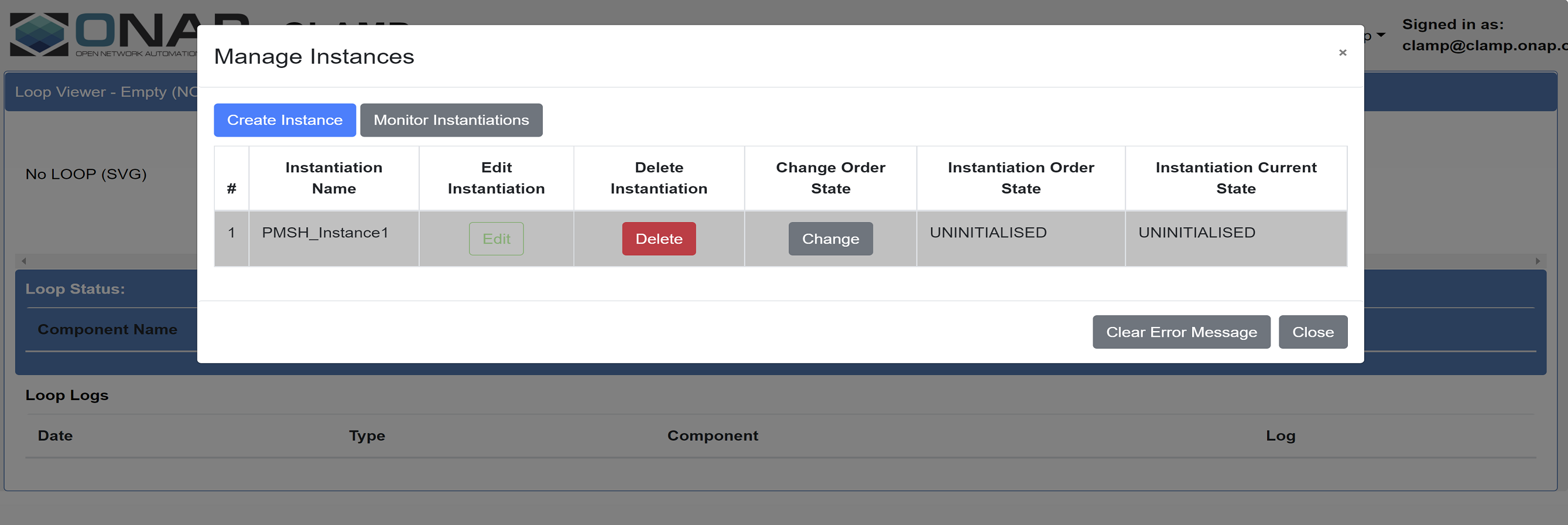CLAMP <-> Dcae
The pairwise testing is executed against a default ONAP installation in the OOM. CLAMP-Automation Composition interacts with DCAE to deploy dcaegen2 services like PMSH. This test verifies the interaction between DCAE and clamp-acm works as expected.
General Setup
The kubernetes installation allocated all policy components across multiple worker node VMs. The worker VM hosting the policy components has the following spec:
16GB RAM
8 VCPU
160GB Ephemeral Disk
The ONAP components used during the pairwise tests are:
CLAMP acm runtime, policy participant, kubernetes participant.
DCAE for running dcaegen2-service via kubernetes participant.
ChartMuseum service from platform, initialised with DCAE helm charts.
DMaaP for the communication between Automation Composition runtime and participants.
Policy Gui for instantiation and commissioning of control loops.
ChartMuseum Setup
The chartMuseum helm chart from the platform is deployed in the same cluster. The chart server is then initialized with the helm charts of dcaegen2-services by running the below script in OOM repo. The script accepts the directory path as an argument where the helm charts are located.
#!/bin/sh
./oom/kubernetes/contrib/tools/registry-initialize.sh -d /oom/kubernetes/dcaegen2-services/charts/
Testing procedure
The test set focused on the following use cases:
Deployment and Configuration of DCAE microservice PMSH
Undeployment of PMSH
Creation of the Automation Composition:
An Automation Composition is created by commissioning a Tosca template with Automation Composition definitions and instantiating the Automation Composition with the state “UNINITIALISED”.
Upload a TOSCA template from the POLICY GUI. The definitions include a kubernetes participant and automation composition elements that deploys and configures a microservice in the kubernetes cluster. Automation Composition element for kubernetes participant includes a helm chart information of DCAE microservice and the element for Http Participant includes the configuration entity for the microservice.
Sample Tosca template

Verification: The template is commissioned successfully without errors.
Instantiate the commissioned Automation Composition definitions from the Policy Gui under ‘Instantiation Management’.

Update instance properties of the Automation Composition Elements if required.

Verification: The Automation composition is created with default state “UNINITIALISED” without errors.

Deployment and Configuration of DCAE microservice (PMSH):
The Automation Composition state is changed from “UNINITIALISED” to “PASSIVE” from the Policy Gui. The kubernetes participant deploys the PMSH helm chart from the DCAE chartMuseum server.

Verification:
DCAE service PMSH is deployed in to the kubernetes cluster. PMSH pods are in RUNNING state. helm ls -n <namespace> - The helm deployment of dcaegen2 service PMSH is listed. kubectl get pod -n <namespace> - The PMSH pods are deployed, up and running.
The subscription configuration for PMSH microservice from the TOSCA definitions are updated in the Consul server. The configuration can be verified on the Consul server UI http://<CONSUL-SERVER_IP>/ui/#/dc1/kv/
The overall state of the Automation Composition is changed to “PASSIVE” in the Policy Gui.

Undeployment of DCAE microservice (PMSH):
The Automation Composition state is changed from “PASSIVE” to “UNINITIALISED” from the Policy Gui.

Verification:
The kubernetes participant uninstall the DCAE PMSH helm chart from the kubernetes cluster. The pods are removed from the cluster.
The overall state of the Automation Composition is changed to “UNINITIALISED” in the Policy Gui.
